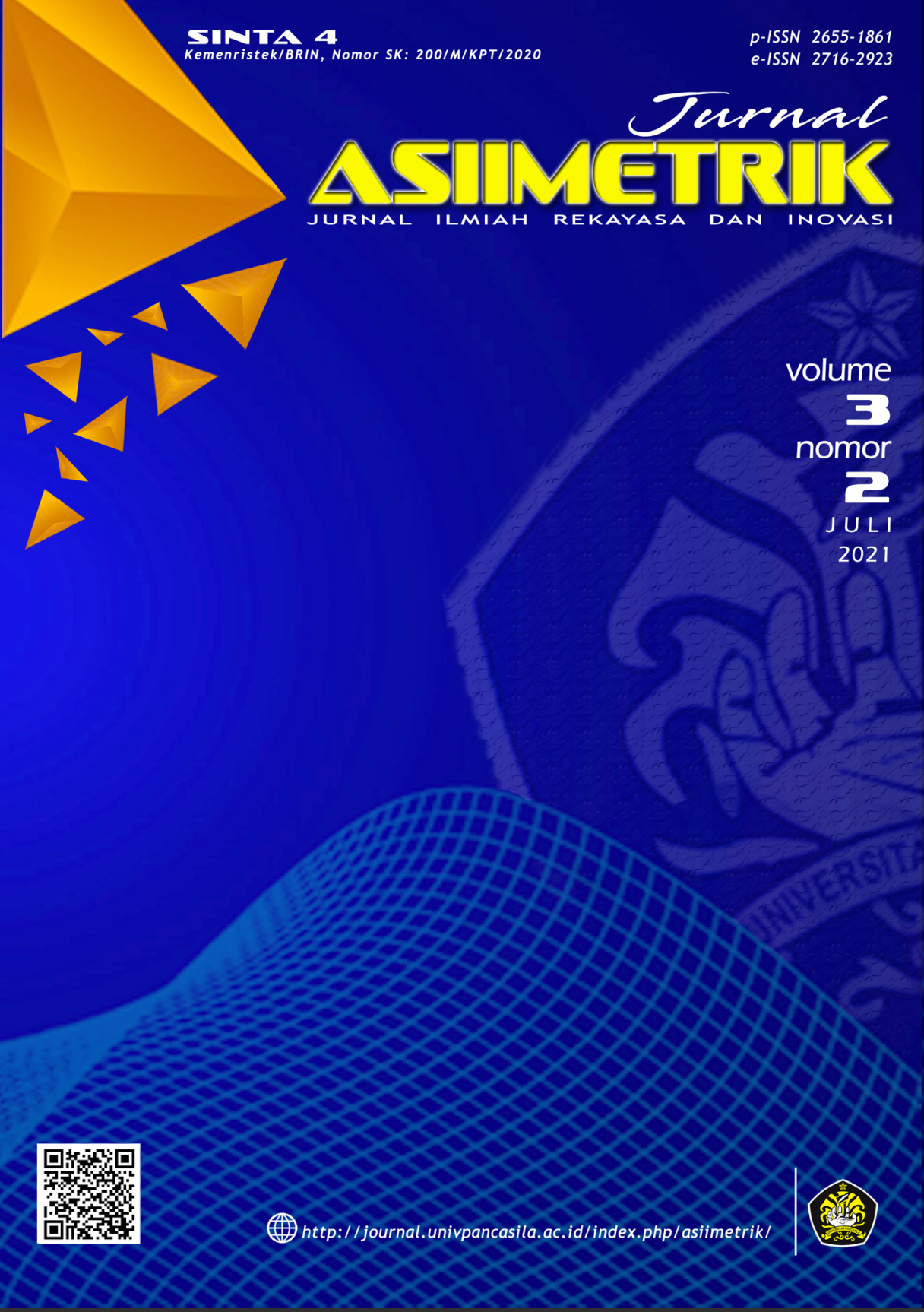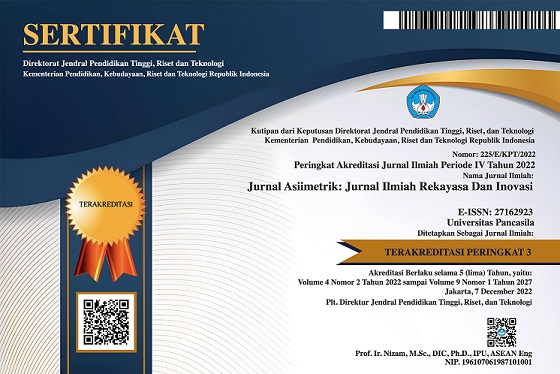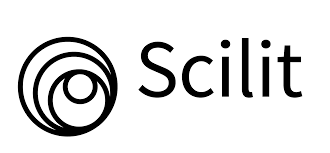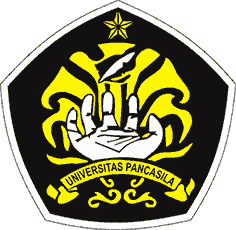Modifikasi Mesin Las Gesek Cakram
DOI:
https://doi.org/10.35814/asiimetrik.v3i2.2161Keywords:
disc friction welding machine, modification, rotational speed, forging load, vibrationAbstract
The purpose of this research is to improve the performance of the disc friction welding machine that has been built and is operated, but there is a drawback, namely that there is no measuring device for process parameters such as rotational speed and forging load. In addition, during operation there is a vibration of 1.5 mm / s to 4.9 mm / s which is unacceptable according to ISO-2372 standards, so that these deficiencies can affect the quality of weld production. Repair or modification of this the friction welding machine is carried out by selecting and installing a rotating speed sensor (RPM) and load cell forging loads and installing rubber to dampen vibrations. Furthermore, the function test was carried out with the load, it was obtained that the rotational speed read on the LCD was 3.7% greater than the tachometer and the vibration decreased up to a value of 0.9 mm/s where this value was acceptable according to ISO-2372, while the performance test resulted in welding production for 3 workpieces with plate sheet material AA-110, ASTM A36 and CU-DHP copper with the same thickness, namely 1mm. From the results of the specimen tensile test of the three materials, it was found that the breakdown location was in the welding area where the tensile test value was around 1.2 to 5.1% of the tensile value of the workpiece material.
Downloads
References
Abdullah, M.E., Elmetwally, H.T., Yakoub, N.G., Elsheikh, M.N. dan Abd-Eltwab, A.A., 2020. Effect of orbital friction crush welding parameters on aluminum tubes. Int. J. Sci. Technol. Res. hal. 4483-4486.
Appleton, E., 2008.‘Product Design for Manufacture and Assembly, Assembly Automation, Vol. 28 No. 3. https://doi.org/10.1108/aa.2008.03328cae.001.
Besler, F. A., P. Schindele, R. J. Grant, dan M. J. R. Stegmüller, 2016. Friction crush welding of aluminium, copper and steel sheetmetals with flanged edges, J. Mater. Process. Technol., vol. 234, hal. 72–83.
Besler, F. A., R. J. Grant, P. Schindele, dan M. J. R. Stegmüller, 2017. Advanced Process Possibilities in Friction Crush Welding of Aluminum, Steel, and Copper by Using an Additional Wire, Metall. Mater. Trans. B Process Metall. Mater. Process. Sci., vol. 48, no. 6, hal. 2930–2948.
Brar, GS, Singh, M, dan Jamwal, AS., 2017. Process Parameter Optimization of Friction Crush Welding (FCW) of AISI 304 Stainless Steel, Proceedings of the ASME 2017 International Mechanical Engineering Congress and Exposition. Volume 2: Advanced Manufacturing. Tampa, Florida, USA. November 3–9, 2017. V002T02A087. ASME. https://doi.org/10.1115/IMECE2017-71302.
Chludzinski, M., dos Santos, R.E., Pissanti, D.R., Kroeff, F.C., Mattei, F., Dalpiaz, G. dan Paes, M.T.P., 2019. Full-scale friction welding system for pipeline steels. Journal of Materials Research and Technology, 8(2), hal.1773-1780.
Darsin, Mahrous, Sumarji, Sumarji dan Sudrajat, Angger. 2012. Analisis Sifat Mekanik Hasil Pengelasan Aluminium AA 1100 Dengan Metode Friction Stir Welding (FSW). ROTOR, v. 5, n. 1, hal. 8-17.
Groover, M. P., 2011. Fundamentals of Modern Manufacturing-Materials, Process, and Systems., 5th ed. John Wiley & Sons, Inc.
Laksono, D. Satrio. 2019. Pabrikasi Mesin Las Gesek Cakram, Tugas Akhir S-1, Fakultas Teknik Jurusan Mesin Univ.Pancasila.
Pah, J.C.A., Irawan, Y.S. dan Suprapto, W., 2018. Pengaruh Waktu dan Tekanan Gesek terhadap Kekuatan Tarik Sambungan Paduan Aluminium dan Baja Karbon pada Pengelasan Gesek Continuous Drive. Rekayasa Mesin, 9(1), hal. 51-59.
Romadhan, A.R., Nugroho, A.W., Suwanda, T. dan Wilza, R., 2019. Sifat Tarik dan Struktur Mikro Sambungan Las Gesek Tak Sejenis Baja-Tembaga, JMPM (Jurnal Material dan Proses Manufaktur), 3(1), hal.20-27.
Uday, M.B., Ahmad Fauzi, M.N., Zuhailawati, H. dan Ismail, A.B., 2010. Advances in friction welding process: a review, Science and technology of Welding and Joining, 15(7), hal. 534-558.
Wimbi,Y., 2019. Perancangan Mesin Las Gesek Cakram. Tugas Akhir S-1, Fakultas Teknik Jurusan Mesin Univ.Pancasila.





























